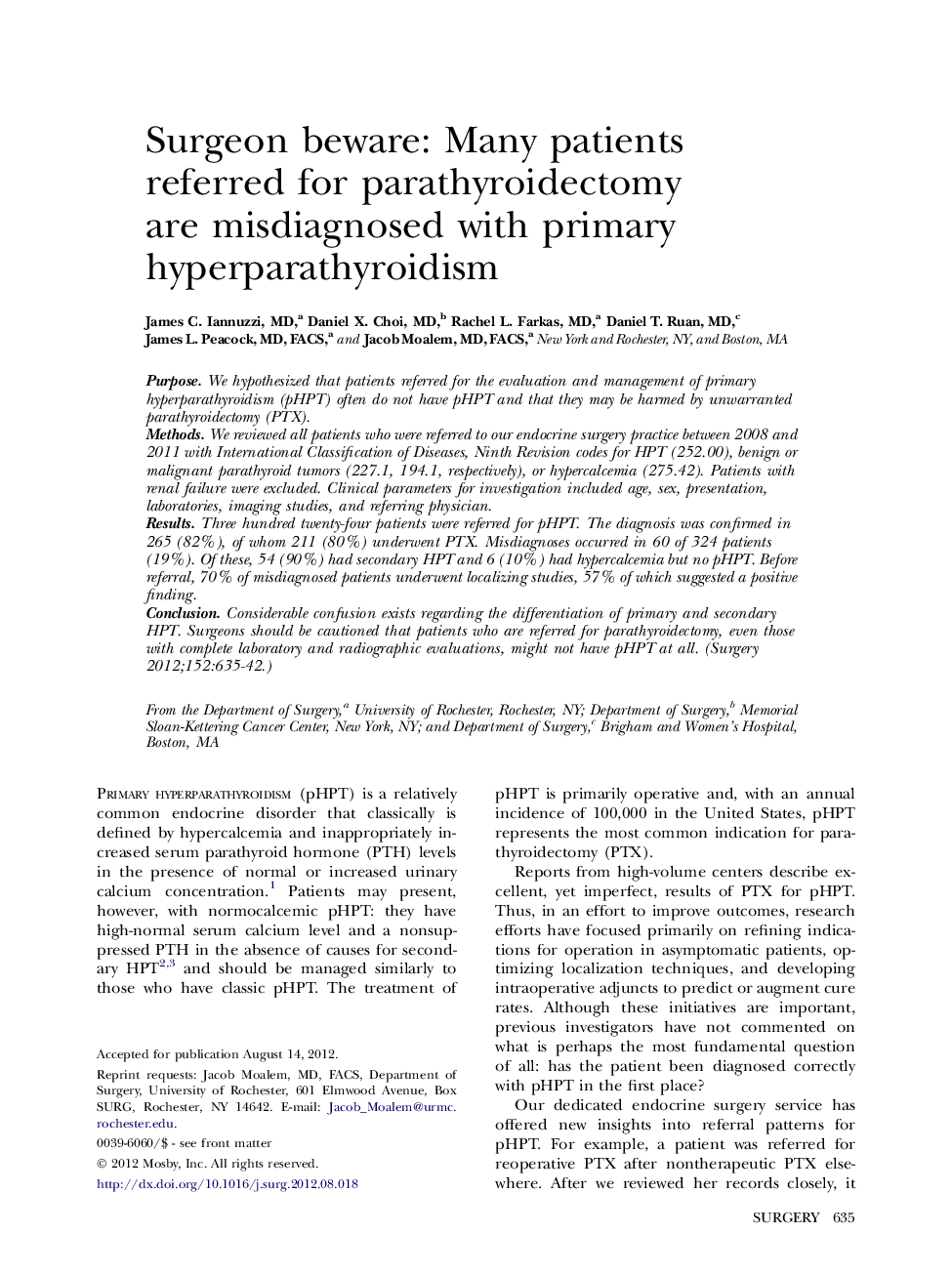| Article ID | Journal | Published Year | Pages | File Type |
|---|---|---|---|---|
| 4307830 | Surgery | 2012 | 8 Pages |
PurposeWe hypothesized that patients referred for the evaluation and management of primary hyperparathyroidism (pHPT) often do not have pHPT and that they may be harmed by unwarranted parathyroidectomy (PTX).MethodsWe reviewed all patients who were referred to our endocrine surgery practice between 2008 and 2011 with International Classification of Diseases, Ninth Revision codes for HPT (252.00), benign or malignant parathyroid tumors (227.1, 194.1, respectively), or hypercalcemia (275.42). Patients with renal failure were excluded. Clinical parameters for investigation included age, sex, presentation, laboratories, imaging studies, and referring physician.ResultsThree hundred twenty-four patients were referred for pHPT. The diagnosis was confirmed in 265 (82%), of whom 211 (80%) underwent PTX. Misdiagnoses occurred in 60 of 324 patients (19%). Of these, 54 (90%) had secondary HPT and 6 (10%) had hypercalcemia but no pHPT. Before referral, 70% of misdiagnosed patients underwent localizing studies, 57% of which suggested a positive finding.ConclusionConsiderable confusion exists regarding the differentiation of primary and secondary HPT. Surgeons should be cautioned that patients who are referred for parathyroidectomy, even those with complete laboratory and radiographic evaluations, might not have pHPT at all.
